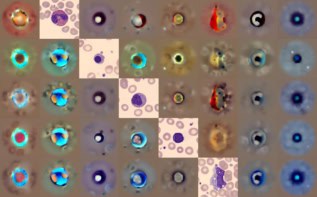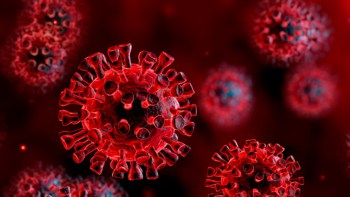
Sharp boundaries between different tissues have been modelled by a group of physicists led by Daniel Sussman at Syracuse University in the US. The team used simulations to calculate values of surface tension in cell populations, showing how different cell types maintain soft yet distinctive borders between each other. Their work could make it easier for scientists to model a variety of complex living systems.
Biological processes including embryo development, tumour metastasis and wound healing, all rely on different types of cells becoming compartmentalized with clear boundaries between different cell populations. These systems were previously modelled by treating cells like immiscible fluids such as oil and water. However, living cells can adapt their properties based on their surrounding environments and this makes them very complicated to model as fluids.
Perfectly-fitting polygons
Sussman’s team simplified the process by creating 2D simulations of a population of one type of cell, surrounded by cells of another type. Based on the “vertex model”, the cells in the simulations were modelled as perfectly-fitting polygons, whose shapes were determined by the positions and types of their neighbours. The researchers altered the simulation so that on the borders between different populations, the cells would respond to the different types of neighbouring cell by adapting their shapes to form smooth, distinct boundaries.
To measure the properties of the system, the team determined the surface tension across the “droplet” formed by the central cell population. The surface tension across small fluctuations on the droplet’s surface was also worked-out. They then simulated what would happen if the droplet is squeezed the between two solid plates, which would normally increase the surface tension across droplets of regular fluids.
Low tension
However, Sussman’s team found that the surface tension across the squeezed droplet was, in fact, lower than in the fluctuations. This meant that while bulk tissues can remain soft and squishy under pressure, cells on the tissue boundary will maintain a shape that sustains sharp boundaries between tissues. The researchers’ work is the first to reveal these effects of surface tension and could prove invaluable to simulations of biological tissues in the future.
The simulations are described in Physical Review Letters



